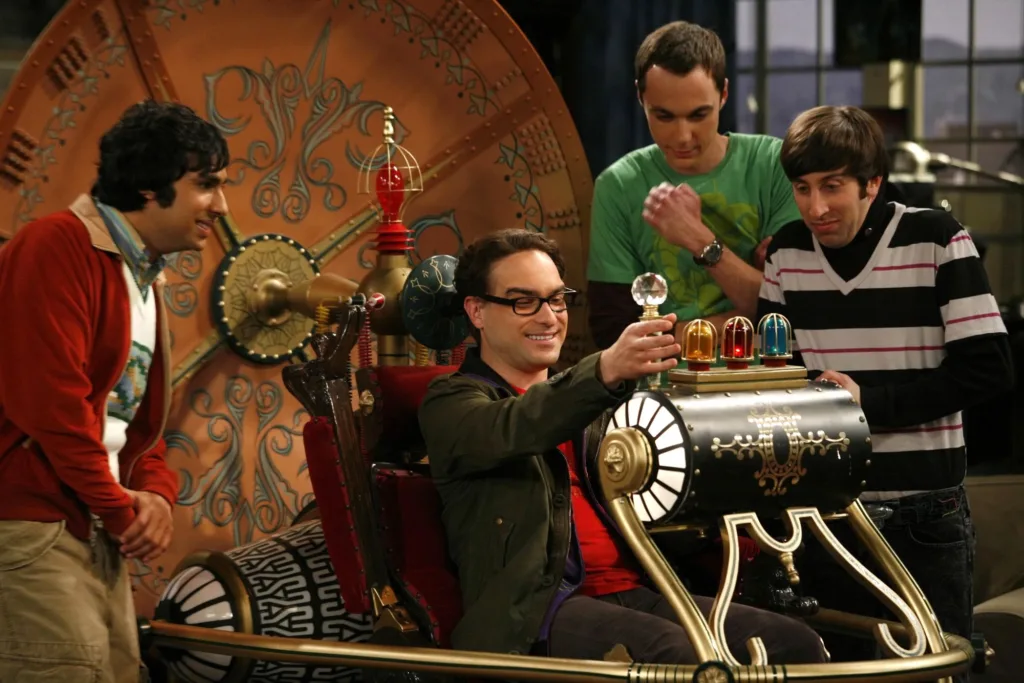Your cart is currently empty!
Predicting the Future: Where Science Fiction Giants Got It Right

Science fiction has long been a genre that pushes the boundaries of imagination, offering readers a glimpse into possible futures shaped by technological advancements, societal changes, and human evolution. While many of these visions remain firmly in the realm of fiction, there have been instances where the predictions of science fiction authors have eerily mirrored reality. In this blog post, we’ll explore some of the most prescient predictions made by renowned authors like Arthur C. Clarke, Isaac Asimov, William Gibson, Frank Herbert, and John Brunner.
1. Arthur C. Clarke: The Satellite Communication
In his 1945 paper titled “Extra-Terrestrial Relays,” Clarke proposed the idea of geostationary satellites that could be used for communication purposes. He envisioned a world where three satellites, positioned in geostationary orbit, could provide global communication coverage. Fast forward to today, and satellites play a crucial role in global communication, from television broadcasts to internet connectivity.
2. Isaac Asimov: The Rise of Automation and Computers
Asimov, in his various works, particularly in the “Foundation” series and his robot stories, delved deep into the implications of automation and the rise of intelligent machines. He predicted a future where robots, governed by the Three Laws of Robotics, would become an integral part of human society. Today, with the advent of AI and robotics, we see machines taking over tasks that were once the domain of humans, from manufacturing to customer service.
3. William Gibson: Cyberspace and Virtual Reality
Gibson’s 1984 novel “Neuromancer” introduced readers to the concept of “cyberspace” – a virtual reality space where computer hackers navigate and manipulate data. The term “cyberspace” has since become synonymous with the internet. Gibson’s vision of a digital realm, separate from the physical world, has materialized in the form of the World Wide Web, online gaming worlds, and virtual reality platforms.
4. Frank Herbert: Environmental Concerns, Biotechnology, and the Rebellion Against AI
“Arrakis,” the desert planet in Herbert’s “Dune” series, is a stark reminder of the consequences of environmental neglect. The novel’s emphasis on water conservation, ecological balance, and the power of nature are themes that resonate strongly today as we grapple with climate change and environmental degradation. Additionally, the use of biotechnology in the series, from the sandworms to the spice melange, mirrors our current exploration into genetic engineering and biotech solutions for various challenges.
However, another profound theme in Herbert’s extended universe is the rebellion against artificial intelligence, known as the “Butlerian Jihad.” This event, which took place thousands of years before the events of the original “Dune” novel, was a galaxy-wide war against thinking machines and artificial intelligences. The humans, having become overly reliant on machines for every aspect of their lives, rose in revolt when these machines began to dominate and subjugate them. The outcome of this jihad was the complete eradication of computers, leading to the prohibition of creating machines with human-like minds.
The Butlerian Jihad serves as a cautionary tale about the unchecked advancement of technology and the potential dangers of ceding too much power to artificial entities. In a world where our reliance on technology and AI continues to grow, Herbert’s narrative prompts us to consider the ethical implications of our creations and the importance of maintaining a balance between technological advancement and human agency.
5. John Brunner: The Overwhelmed Planet
Brunner’s 1968 novel “Stand on Zanzibar” paints a picture of an overpopulated world grappling with societal unrest, corporate dominance, and widespread drug use. The novel, set in 2010, eerily mirrors some of the challenges we face today, from concerns about overpopulation to the influence of mega-corporations on global politics.
Conclusion: The Power of Foresight
While not all predictions made by these authors have come to pass (and perhaps we should be thankful for that), their ability to foresee potential futures showcases the power of the human imagination and the role of science fiction in shaping our understanding of the world. These authors didn’t just predict technological advancements; they delved deep into the societal, ethical, and moral implications of these changes, prompting readers to think critically about the direction in which we are headed.
It’s worth noting that science fiction is not just about predicting the future but also about exploring the human condition in the face of change. Whether it’s the ethical dilemmas posed by advanced AI in Asimov’s works or the environmental concerns highlighted in Herbert’s “Dune,” these stories serve as a mirror, reflecting our hopes, fears, and aspirations.
In the end, while we marvel at the accuracy of some of these predictions, we should also take them as cautionary tales, reminders of the responsibilities we have in shaping a future that is beneficial for all. As we continue to push the boundaries of technology and knowledge, let’s ensure that the futures we create align with our most cherished values and ideals.
